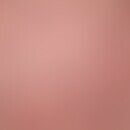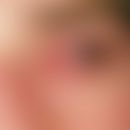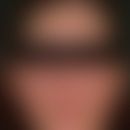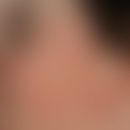Synonym(s)
DefinitionThis section has been translated automatically.
Acronym for "Light Amplification by Stimulated Emission of Radiation". Stimulated emission of radiation results in coherent amplification of electromagnetic oscillations, generating bundled, monochromatic, high-energy light with high intensity and good focusability.
Solids (e.g. ruby crystals), liquids (dye solutions, e.g. rhodamine 6G or gases (e.g. argon,CO2) can be selected as the active medium of the laser.
General definitionThis section has been translated automatically.
- Lasers can emit their energy continuously (continuous wave -cw-) or in pulses(pulsed lasers). Pulsed lasers produce flashes of light in the microsecond range. Extremely short exposure times and very high outputs can be achieved using a quality switch (qs-).
- Medically important lasers (wavelengths emitted in brackets):
- Alexandrite laser (755 nm): The Q-switched alexandrite laser is used to treat tattoos and pigmented skin lesions. The mode of action and side effect rate are similar to the ruby laser.
- Argon laser (488 nm): used since 1975 primarily to treat vascular changes in the skin and superficial pigment changes. The light of the argon laser can penetrate about 1 mm deep into the skin. The energy absorbed closes the vessels and destroys the pigmented cells. The risk of scars and color changes is higher than with the dye laser.
- CO 2 laser (10,600 nm): Ablative laser, suitable for "skin resurfacing", for smoothing acne scars, but also for removing xanthelasma and syringomas. The principle ofCO2 laser treatment is based on the vaporization of the uppermost skin layers. The energy of the laser pulses is absorbed by cells containing water and converted into heat.
- Diode laser (mainly 805-810 nm): Laser specially designed for epilation (photoepilation). Diodes (semiconductors) are used as the light source.
- Erbium YAG laser (2,940 nm): Ablative laser with a similar application range toCO2 lasers. Compared to carbon dioxide lasers, it generates less heat (cold ablation). The treatment is therefore less painful and the treated skin heals more quickly. The disadvantage of this type of laser is that there is no collagen shrinking or hemostasis due to the lack of heat development. The smoothing effect is therefore somewhat less effective.
Erbium glass laser (1,535-1,550 nm): Fractionated non-ablative laser. This is used to treat moderately pronounced wrinkles, benign pigmentation, scars and coarse-pored skin. The mechanism of action is based on localized dermal heating with subsequent remodeling. Skin types I-VI can be treated. This laser is contraindicated for keloids and hypertrophic scars. Several treatments at intervals of 4-6 weeks are necessary to achieve a moderate improvement in light-aged skin and wrinkles.
- Excimer laser (308 nm): Primarily used to treat individual psoriasis plaques in chronic stationary psoriasis vulgaris due to the emission spectrum.
- Dye laser (585-600 nm): The pulsed dye laser can be used to remove nevi flammei, senile angiomas and nevi aranei. The effect is based on the principle of so-called selective photothermolysis. The light from the laser is absorbed by pigment-rich structures and converted into heat. This heat selectively damages or destroys the respective target structure. Target structures of the dye laser include small skin vessels, such as spider veins.
- Neodymium YAG laser (QS: 532 nm; pulsed 1064 nm): The long-pulsed Nd-YAG laser is particularly suitable for the treatment of vascular changes. In the case of nodular nevi flammei and thick or deep-seated hemangiomas, a thin light guide is inserted into the tissue, thus enabling deep treatment. The light from the Nd-YAG laser is absorbed by the blood cells. These stick together and close the vessels. Tattoos can be removed very well with the Q-switched Nd-YAG laser.
- Ruby laser (694 nm): The Q-switched ruby laser is particularly suitable for the removal of tattoos, dirt, permanent make-up and benign pigmented skin lesions. The light from the ruby laser is absorbed by melanosomes, which are destroyed as a result. This causes inflammation, which attracts macrophages. These absorb the color particles and transport them away. Further color particles are removed as the crusts that form on the treated areas heal. The long-pulsed ruby laser is used for permanent epilation.
- Flash lamps (250-1200 nm): Flash lamp technology (IPL technology) is a laser-like technology. It is primarily used to treat diffuse erythema caused by telangiectasia. Also suitable for photoepilation. IPL light is emitted by a xenon lamp, for example.
You might also be interested in
Note(s)This section has been translated automatically.
For the dermatological laser therapy the analogous fee items No. 2440 GOÄ (< 7.0 cm²) No. 2885 GOÄ (7 cm² - 21 cm²) or 2886 GOÄ (> 21 cm²) are used depending on the extent of the areas to be treated. It is not important how many of the above-mentioned skin changes are treated and with which laser method. Only the extent of the area as a whole is to be evaluated. If, for example, verrucae vulgaris with an extension of about 18 cm², as well as further verrucae with an extension of 4 cm² are treated by laser in one session, the analogous no. 2886 GOÄ can be calculated.
LiteratureThis section has been translated automatically.
- Almirall,Herrmal (2014) Business letters dermatology 10:7
- Basov NG, Prokhorov AM (1954) 3-level gas oscillator. Zh Eksp Teor Fiz (JETP) 27: 431
- Gordon JP, pointer HJ,Townes CH (1955) The Maser. New type of amplifier, frequency standard and spectrometer. Physiol Rev 99: 1264-1274
- Greve B, Raulin C (2003) Medical dermatological laser therapy: An overview. dermatologist 54: 594-603
- Hohenleutner U et al (1995) Ruby laser: Medicine or cosmetics? Z Hautkr 70: 875-876
- Kaufmann R (1992) Current status and new trends in dermatological laser therapy. Z Hautkr 67: 495-502
- Kimmig W (2003) Laser interventions in dermatology: risks and opportunities. dermatologist 54: 583-593
- Raulin C (1996) Possibilities and limitations of the pulsed dye laser. Z Hautkr 71: 96-102
- Stratigos AJ, Dover JS, Arndt KA (2003) Laser therapy in aesthetic dermatology. Dermatologist 54: 603-613
TablesThis section has been translated automatically.
Laser type |
Wavelength |
Pulse duration |
Energy |
Pulse rate |
Performance |
Applications |
Alexandrite laser |
755 nm |
up to 40 ms |
50J/cm2 |
10 Hz |
|
removal of tattoos, epilation, hyperpigmentation |
Argon laser |
488 nm and 514 nm |
|
|
|
up to 5 W |
Haemangiomas, senile angiomas, N. flammeus, telangiectasias |
Diode laser |
805 (635-900) nm |
up to 100 ms |
up to 60 J/cm2 |
to 2 Hz |
1600 W |
Epilation |
Excimer laser |
308 nm |
8 ns |
10 mJ |
up to 200 Hz |
50 mW |
Vitiligo, psoriasis vulgaris and other inflammatory dermatoses |
CO2 laser |
10.600 |
< 1.4 ms |
1-500 mJ |
|
1-100 W |
cutting ( scalpel ), vaporizing, material processing |
Ultrafine Encore Laser |
|
< 2 ms |
1-250 mJ |
|
1-60W |
laser peeling, skin resurfacing, blepharoplasty |
Ruby laser |
694 nm |
40 ns to 2 ms |
10-500 mJ |
1-5 Hz |
100 W |
removal of tattoos, pigmentation disorders |
Nd-YAG laser |
Qs: 532 nm |
4-5 ns |
200 mJ |
up to 10 Hz |
5-100 W |
vascular diseases, removal of tattoos (red, yellow, orange), hypertrophic scars |
pulsed: 1064 nm |
5-6 ns |
400 mJ |
up to 10 Hz |
5-100 W |
Tattoo removal, coagulation, cutting ("bare fiber") |
|
pulsed dye laser |
585-600 nm |
500 µs or 1500 µs |
up to 20 J/cm2 |
|
2-9 kW |
Nevus flammeus |
Erbium-YAG |
2940 nm |
100-400 µs |
0,1-2 J |
up to 33,3 Hz |
up to 20 W |
Lentigines, actinic keratoses, flat seborrhoeic keratoses, milia |




